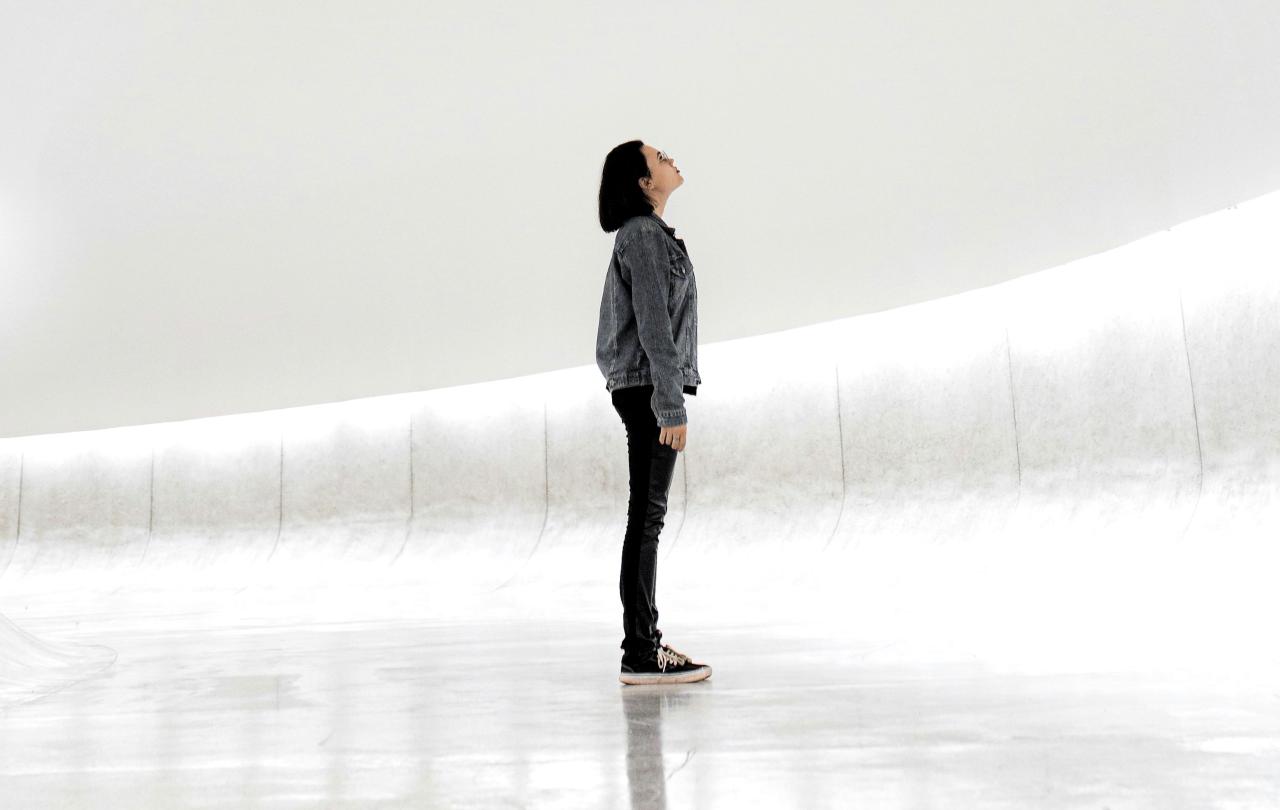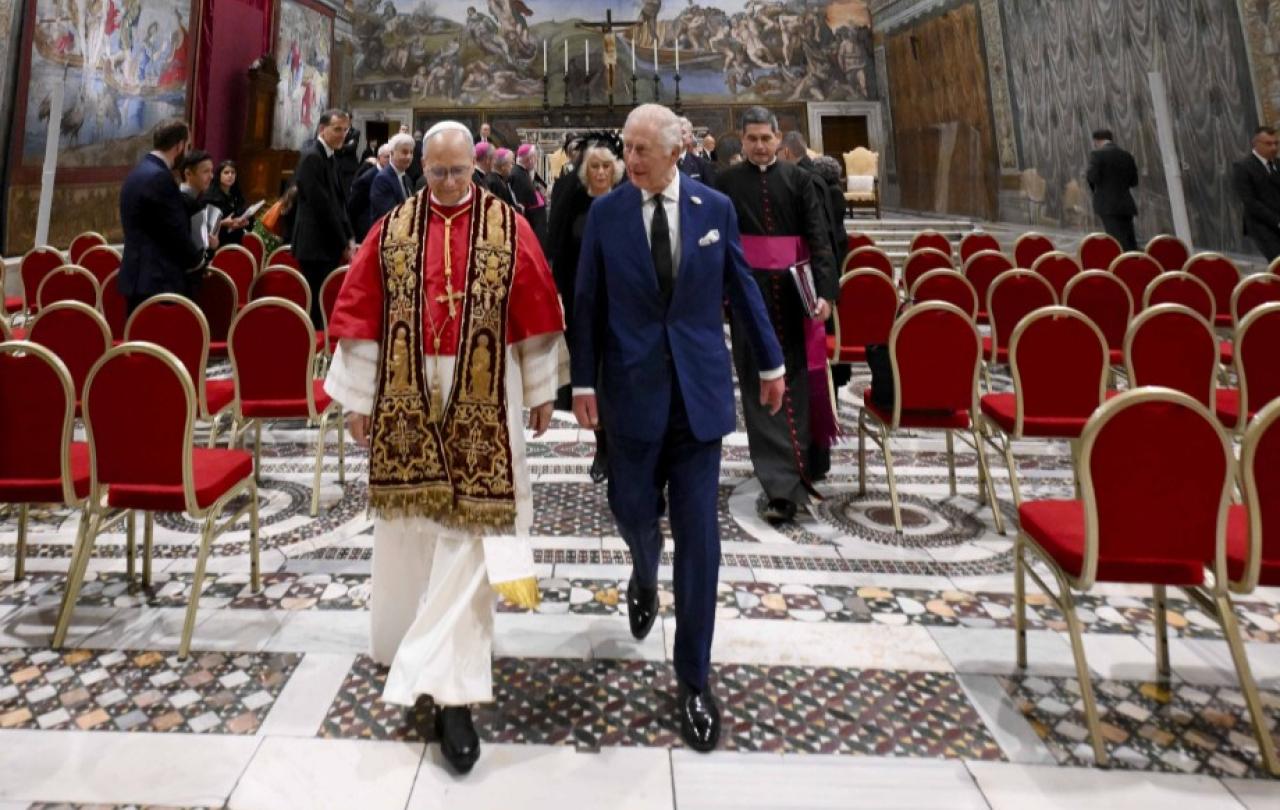
When I was a kid in the eighties, Japan belonged in the realm of science fiction. The Land of the Rising Sun was the land of bullet trains, robotics, the Sony Walkman, the home of Sonic and Mario. British engineers and technicians learned Japanese to avoid being left out when the inevitable Nipponese future arrived.
In recent years the news has been more concerning. One and a half million young Japanese people have become hikikomori, locked in their rooms in extreme isolation. The birthrate has bottomed out. Loneliness is pandemic, with restaurants designed to serve food to diners without needing to meet another person, not even a waiter. Yet Japan remains a place of profound spiritual heritage. Even its cultural exports reflect this. Take Studio Ghibli. There is a word for the moments of quiet contemplation that punctuate their films- ma. It’s the Japanese concept of the interval or space between things. A moment to breathe. If Pixar warms our hearts, then Ghibli heals our souls.
One of the most impressive people I know is Japanese. When asked about his upbringing he is characteristically understated. His parents, he says, were very religious. What he means by this is that they were practicing Buddhists and by the age of three he was meditating with them for hours every day. He now speaks multiple languages, has worked in universities all over the world, and has single-handedly taught more people psychological wellbeing skills than anyone else know. He carries himself with an elegant and compassionate poise that gently permeates any room he enters. He’s very, well… zen.
No doubt my characterisation of Japan is deeply culturally ignorant, unencumbered by any actual awareness of the economics and sociology that have determined the nation’s profile in recent decades. Chief among my many ignorances was the idea that the practice of meditation was widespread in Japan. You couldn’t throw a stick in Kyoto, I assumed, without hitting half a dozen robed monks perched on a rock. But it turns out I’m wrong. When I ask my friend, freshly returned from leading a retreat on Mount Fuji, if his meditative upbringing was typical, he says it wasn’t. It was very unusual. The notion of religious affiliation is not well matched to the complexity of Japanese culture, but more than one commentator has wondered whether the dominant ideology is not Buddhism, nor even Shinto, but Materialism.
Perhaps then it is not a complete surprise that in a recent study of more than 200,000 respondents from 22 countries, Japan is ranked last of those who report praying or meditating daily. According to this analysis, only 10 per cent of the Japanese population pray or meditate each day, just behind Sweden on 11per cent and Germany on17 per cent. Nigeria comes top of the list, with 92 per cent of the population reporting daily prayer or meditation (a result which tempted me to wonder whether the study had measured prayer in decibels rather than percentages. If like me, you’ve been fortunate enough to join Nigerian Christians in prayer, you will know what a joyously raucous occasion that can be). The national data equally represents Nigerian Muslims engaged in daily salat. Even more so the data from Indonesia, ranked second with 84 per cent of the population reporting daily prayer.
Roughly halfway down the table of results there is a sort of break, a statistical chasm if you like. Brazil is listed as 10th on the list with 65per cent of the population praying/meditating each day and then, after a bit of drop, Mexico and the United States come in as the best-of-the-rest at 48per cent and 42per cent respectively. The UK hovers just above the relegation zone, fifth from the bottom at 24per cent. If this was the Premier League, we would be Everton. Not good enough to win, but not great at losing either. I support Everton. They are my team. I pray a lot.
Of course, the major thing the authors had to clarify in their first few sentences was whether they were right to treat prayer and meditation as the same thing. Many people would argue they are different things. Prayer is usually directed towards one or more divine recipients. Meditation may include the quietude and introspection of prayer but does not necessarily require a theistic focus. The authors argue – I think rightly – that while prayer and meditation can be differentiated, they are similar and overlapping practices, which psychologically perform similar functions. They have both been linked with similar outcomes for those who practice them: increased psychological wellbeing, higher gratitude, greater purpose in life, reduced aggression, greater social connectedness, longer life expectancy, and so on. And this research certainly confirms demographic findings across cultures. Those who pray or meditate daily are likely to be elderly, retired, women, homemakers, and regularly attend religious services.
We’ve become myopic. Our technical prowess occupies the foreground, but the infinite mysterious background is chronically out of focus.
The reason this research interests me so much is because prayer and meditation – which are pretty much the same thing for me – are the most important things I do, but probably the ones I talk about least. So when I read that one-in-four people here in Britain are praying or meditating every day, I’m surprised twice. First surprise: so few people pray. Second surprise: more people are praying than I thought.
The first surprise is the realisation that it simply does not occur to many people to pray, even in situations when a bit of prayer would come in quite handy. This hit me most strongly when I watched Matt Damon playing The Martian. Stuck alone 140 million miles from home, he survives by growing potatoes in his own faeces, but at no point in his isolation does it ever occur to him to pray. Faced with a seemingly insurmountable problem he opts (in his words) to “science the sh**t out of it”. Personally, if I were stuck on Mars I would science the sh**t out of it and pray the sh**t out of it - though I suspect overcoming the disgust of wolfing down potatoes smeared in excrement would feature prominently in my daily devotions. But I can’t imagine not praying. I mean, Tom Hanks couldn’t survive two minutes on a desert island without worshipping a volleyball. Hopefully I’d do a bit better than that.
Much of the daily prayer recorded internationally was corporate not solitary: people gathering to pray or meditate, not sneaking off to do so in secret. But there is something about praying alone that captures my imagination, that is both enthralling and intimidating. William James famously defined religion as what we do with our solitude. We are who we are when we are alone with God and no more, claimed C.S. Lewis. And mystics down the millennia have loved to cite the definition of prayer offered by Plotinus, the flight of the alone to the alone. Praying alone ups the stakes. Because if there is no God and we make time to be alone, we are truly alone. If there is no God and we whisper our deepest desires into the darkness with no one to hear them, we are exposed as ridiculous creatures wasting our breath. Not meeting with God, just talking to ourselves.
Praying together is good, but it can be distracting, too susceptible to the mixed motives of impressing, appeasing or opposing others. Jesus was aware of this tension. His advice not to pray publicly for spiritual status, but rather to find a secret space where God could be found in secret, is pretty exacting. He knew that the danger of praying in a group is being satisfied with social rather than spiritual reward. To settle for the impression our prayers make on those around us, rather than surrendering to the impression God would make on us.
So maybe all that worrying about Japan is really just a projection of my own hopes and fears for people closer to home. On the one hand I worry that we have scienced the sh**t out of our ability to pray or meditate. Everything is a problem to be solved. We’ve become myopic. Our technical prowess occupies the foreground, but the infinite mysterious background is chronically out of focus. On the other hand, I find solace in knowing that every fourth person I pass in the street may have some inkling of what it means to connect with a deeper reality in prayer or contemplation. It gives me hope. Hope that wherever we are, whatever we are doing, whenever we wish to, there is always time to take one long deep breath in. And without fanfare or posting to Instagram, exhale our love, our worry, our sadness, our gratitude to the one Jesus called Our Father in secret.
Support Seen & Unseen
Since Spring 2023, our readers have enjoyed over 1,000 articles. All for free.
This is made possible through the generosity of our amazing community of supporters.
If you enjoy Seen & Unseen, would you consider making a gift towards our work?
Do so by joining Behind The Seen. Alongside other benefits, you’ll receive an extra fortnightly email from me sharing my reading and reflections on the ideas that are shaping our times.
Graham Tomlin
Editor-in-Chief





